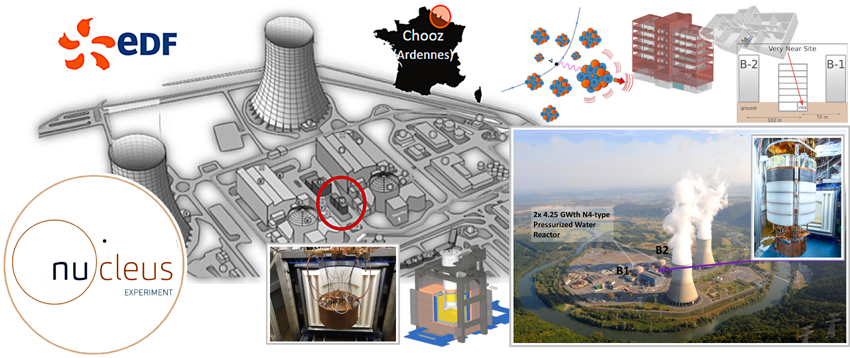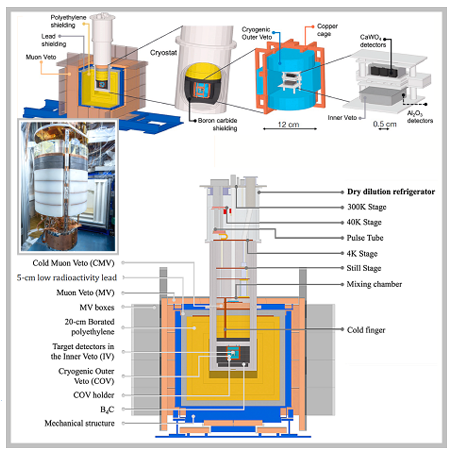
NUCLEUS, the Coherent Elastic Neutrino-Nucleus Scattering experiment in nuclear plant
NUCLEUS is a cryogenic experiment searching for the Coherent Elastic Neutrino-Nucleus Scattering (CEνNS) interaction. Predicted in the Standard Model of particle physics in 1973, the CEνNS was observed only in 2017, due to the small nuclear recoil energy produced as the sole outcome of the interaction. This process offers a unique way to investigate neutrino properties and to search for new physics beyond the Standard Model.
Nuclear reactors are promising sources for exploring this process at low energies, as they produce large fluxes of anti-neutrinos with typical energies in the range of a few MeV. NUCLEUS is a collaboration involving Germany, France, Italy, and Austria. The first experimental phase utilizes cryogenic detectors with an unprecedented low energy threshold of approximately 20 eV. The experiment will be conducted within the Chooz nuclear power plant complex in France, located 72 meters and 102 meters from the two 4.25 GWth nuclear cores.

The NUCLEUS site (Very-Near-Site, VNS) has an excellent short baseline from the neutrino source, allowing for the study of the CEνNS cross section with 20% precision in less than one year of data collection during the first phase. The second phase aims to improve the precision of the interaction cross-section down to 1%, by increasing the target size and reducing uncertainties in the flux and energy spectrum.
The NUCLEUS setup at the VNS consists of a cryostat containing target detectors, which are surrounded by both passive and active shielding, including a cold shield within the cryostat. The outermost layer features an active muon veto, covering an area of approximately 1 square meter. The INFN Roma Tor Vergata section is involved in simulation, data analysis and interpretation, as well as the electronics for the Germanium Cryogenic Active Veto (COV). During the commissioning phase at the UGL underground laboratory of the Technische Universität München (TUM), a long background run (LBR) was conducted in 2024. Following this phase, the setup will be relocated to the Chooz nuclear plant, where the experiment will be exposed to the reactor neutrino flux.








